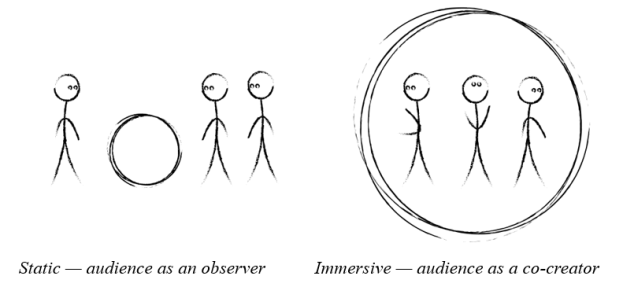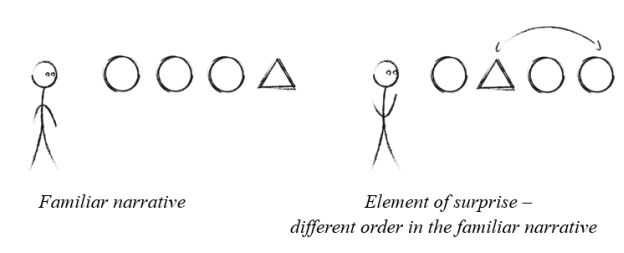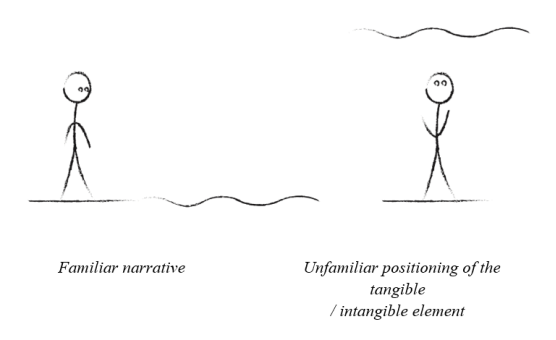Glossary: traveller (s) — the audience, the subject of experiencing Immersive Experience Design, sensorial experience — curated experience that engages multiple senses, psychological expansion — a realisation, change in opinion or perception through new knowledge or experience
Immersive Experience Design is a relatively new branch of design, but its methodologies have begun to revolutionize entertainment, retail, education and activism1. Budget for Experiential Marketing is expected to grow 24 % in the next 18 months and the Immersive Entertainment Industry alone is valued at more than $4.5 billion2. However aside from observing the quantitative growth of the industry, it is really important to look at its capabilities in relation to humans’ psychology: its ability to empower, increase empathy and improve learning.
Emotions have the most profound effect on our consciousness and decisions that we make. Traditional branches of design typically engage one or two senses, meanwhile Immersive Experience Design uses 3D tangible objects and intangible elements like light, sound and scent to create new environments and fascinating narratives. By providing sensorial experiences, these environments profoundly affect, excite and engage audience.
Immersive Experience Design is on the rise because it makes people feel more, think more and engage with art and design on a different, more intimate, level. It lets the audience to blur the border between themselves and the design — allowing each traveller to interact and co-create the outcome of their experience. A possibility of interaction with an object of art or any other curated environment triggers curiosity in people, it makes them more alert and creates a completely different relationship: the person stops being an observer and becomes a co-creator.

Key design elements:
How to design an Immersive Experience?
Step 1. Identifying your audience / primary customer.
Immersive Experience Design is human centric. It is for and about people. Therefore one of the most important questions to ask is whom are you designing for? Who is your audience? Who would want to experience it and why? After identifying who is your potential customer, you need to think of what kind of value will be delivered to the group. In order to deliver value, an experience has to be relevant: to the time in the past, to a current issue, to a specific interest or a trend. Considering the aforementioned questions could facilitate creation of the narratives that people will relate to and love.
Step 2. Creating narratives
There are 2 key ways to design a narrative: to design it as an interactive story or as a story where the audience is given the power to co-create the outcome. The latter requires more creative work and production but giving audience the power sparks curiosity, triggers excitement and helps to engage on a deeper level.
In order to establish a personal connection with the happening, a person has to experience 2 things. The first one is a sense of familiarity; we cannot like something that is completely foreign to us. The second one is an element of surprise. Integrating an element of surprise in a narrative that seemed predictable and familiar at first will create a stronger impression on the audience. Plot twists help with recalibrating attention, sparking interest and excitement. To be able to create these moments the designer can take a very familiar experience or recreate a similar space, apartment for example; and then reverse the order of the familiar spaces, or the location of objects in relation to a human’s body. It is a game of expectations, preparing audience for one setting and presenting a different one.

Step 3. Pillars of certainty (space, time and rules)
A sense of novelty is celebrated among creative experiences, but the only aspect that differentiates immersive experiences from our every day lives is curation. There is a certain set of conditions that have to be in place for the immersive experience to happen. To be able to fully immerse your audience, it is necessary to secure the space and eliminate as much noise as possible. Securing the space and time is crucial for any experience. When a person is making time for an event (having to switch off technology, having to buy a ticket) he is assigning a higher value to the happening, is more attentive and more engaged in the narrative. Not all rules are bad. Creating a set of rules for the experience can help audience navigate better through the story and stay engaged on a deeper lever.
Step 4.
Producing an experience based on the established narrative: a theatrical performance, an art installation, an event, a festival, an immersive art installation.
What are the key design elements in the production process?
- Tangible
Everything that is related to physical elements: the space, the set design, elements of the space that the audience can interact with through tactile experiences.
- Intangible (based on senses)
Elements that cannot be touched, but can be experienced through other senses. A sense of privacy in an empty space can be altered with external sound. Similarly to other elements like light and smell the perception and experience of the physical space can also be changed. Sensorial elements can be more powerful that a physical setting and orchestrating them well can create a great fully immersive experience.

- Human resources — actors & production staff
Organising multiple actors and production staff to create the experience. Depending on the narrative there might be multiple levels of engagement with the public: from behind the scenes — regulating the event, to direct engagement in the storyline.
Immersive Experience Design as a powerful tool.
Psychological expansion comes from diverse personal experiences. New narratives trigger us to think, perceive and process information differently. That is why storytelling is a very powerful tool. Experiencing an event, through a story, a theatrical performance, in an unusual 3D environment fires up new neurons in our brains, stimulates new neural connections and sometimes changes our gene expression: a person can feel better, mentally or/and physically3.
There is nothing more powerful than a human emotion and Immersive Experience Designers have privilege to create stories, curate environments and help travellers co-create their personal experiences.
References:
- Interactive, Intimate, Experiential: The Impact of Immersive Design. [online] San Francisco, California: The 2019 Immersive Design Summit, pp.1–29. Available at: https://immersivedesignsummit.com/2019industryreport.pdf [Accessed 30 Nov. 2019].
- Stein, Lindsay. “Experiential Marketing Budgets Expected to Grow, Study States.” Campaignlive.Com, Campaign, 29 Jan. 2019, www.campaignlive.com/article/experiential-marketing-budgets-expected-grow-study-states/1524175. Accessed 30 Nov. 2019
- Dispenza, Joe, and Daniel G Amen. Breaking the Habit of Being Yourself Carlsbad, Calif., Hay House, 30 Nov. 2019.

